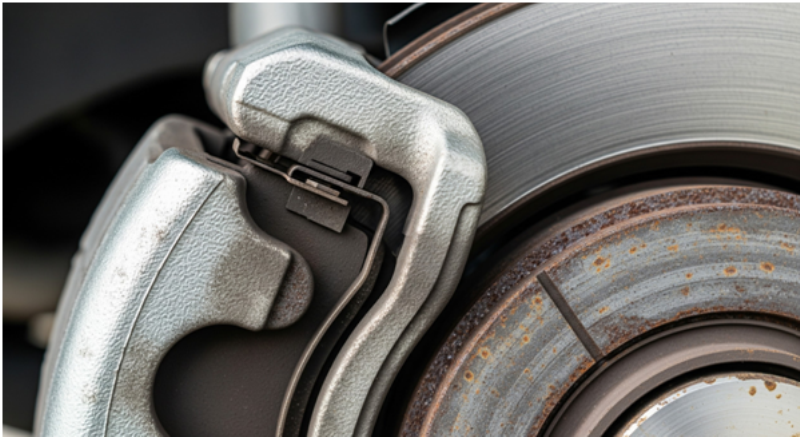
When you discover your brake pads are wearing unevenly, it’s easy to blame the pads themselves. But in most cases, the pads are merely the victims of a deeper, more mechanical issue. Uneven wear is a clear symptom that the complex system designed to apply smooth, even pressure has failed. The two most common culprits behind this failure are the brake caliper and the relentless advance of corrosion.
Understanding how these two factors disrupt your brake system is key to not only fixing the problem correctly but also preventing it in the future. This deep dive will explore the mechanical failures within the caliper and the insidious ways rust can sabotage your vehicle’s stopping power.
The Caliper: A Story of Seized Movement
The brake caliper is the hydraulic heart of your braking system. In most modern cars, it’s a “floating” caliper designed to slide freely on lubricated pins. This movement allows it to perfectly center itself and clamp both the inner and outer brake pads with equal force. When this movement is compromised, uneven wear is inevitable.
Failure Point 1: Seized Slide Pins The caliper slides back and forth on two metal pins that sit inside lubricated rubber bushings. Over time, this essential lubricant can break down, wash away, or become contaminated with road grime, salt, and moisture. When this happens, the pins begin to bind and can eventually seize completely within their bores.
Once a slide pin is seized, the caliper can no longer “float.” When you press the brake pedal, the caliper piston will push the inner brake pad against the rotor as intended. However, because the caliper body cannot slide to compensate, it fails to pull the outer brake pad against the rotor with the same force. The result is that the inner pad does almost all the work, causing it to wear out at an alarming rate while the outer pad remains nearly new.
Failure Point 2: The Sticky Caliper Piston Inside the caliper is a hydraulic piston that is pushed out by brake fluid to apply pressure. This piston is protected from the elements by a flexible rubber dust boot. If this boot develops even a small tear, it creates an entry point for water and debris.
Moisture attacks the machined surface of the piston, causing it to corrode. This corrosion creates a rough, pitted surface that prevents the piston from retracting smoothly after you release the brake pedal. The piston remains partially extended, forcing the brake pad to drag constantly against the spinning rotor. This constant friction generates immense heat, which glazes the pad, overheats the rotor, and grinds the friction material down to nothing in a fraction of its normal lifespan.
Corrosion: The Silent System Killer
While a malfunctioning caliper is an active problem, corrosion is a more passive but equally destructive force. Rust doesn’t just affect the look of your brake components; it physically changes their dimensions and functionality.
Rust Jacking and Binding Hardware The brake pads sit in a metal cradle on the caliper bracket, held in place by small metal clips known as abutment hardware. Over time, rust can form on the caliper bracket underneath these clips. As the rust builds, it physically pushes the clip upwards, a phenomenon known as “rust jacking.”
This process effectively shrinks the space where the brake pad is meant to slide. The pad becomes tightly wedged in place, unable to move freely. A pad that can’t slide can’t properly engage with the rotor or, more critically, disengage from it. This leads to dragging, overheating, and tapered wear as the pad is forced against the rotor at an awkward angle.
Corrosion on the Wheel Hub A less obvious but critical point of corrosion is the surface of the wheel hub where the brake rotor is mounted. If rust and scale build up on this surface, the rotor cannot sit perfectly flat when the wheel is bolted on. Even a deviation as small as the thickness of a human hair will cause the rotor to wobble as it rotates (known as excessive runout). This constant wobble “kicks” the brake pads with every revolution, leading to uneven pad deposits, strange vibrations, and eventually, uneven pad wear.
The Solution: A Comprehensive Approach
Fixing uneven brake wear is never as simple as just installing new pads. A proper brake service must address the root cause. This involves disassembling the caliper, cleaning and re-lubricating the slide pins, cleaning the rust from the abutment clip contact points, and ensuring the wheel hub is clean and smooth.
Simply put, the pads are the last part of the equation. By understanding the mechanical failures that lead to their demise, you can ensure a lasting and safe repair. For a complete overview of these issues, the guide on brake pad wear provides an excellent summary of what to watch out for.